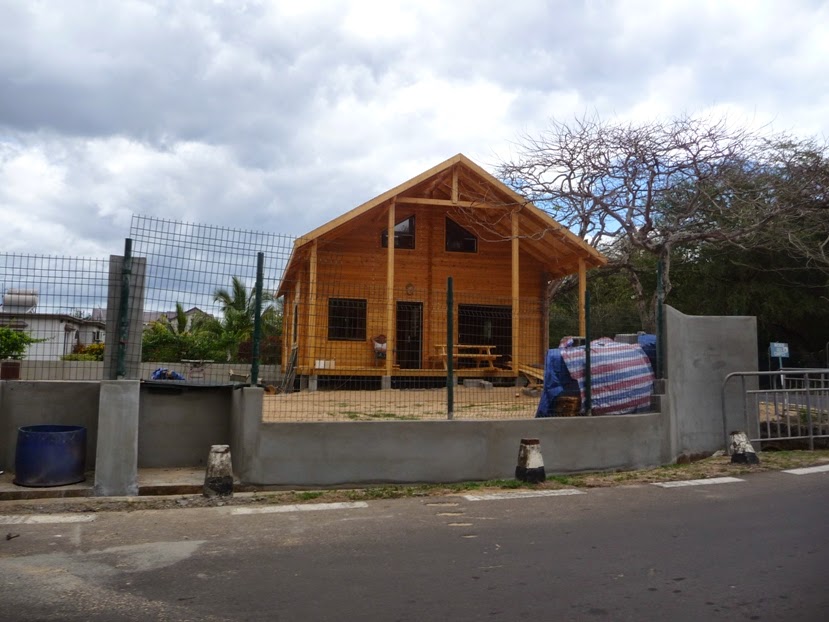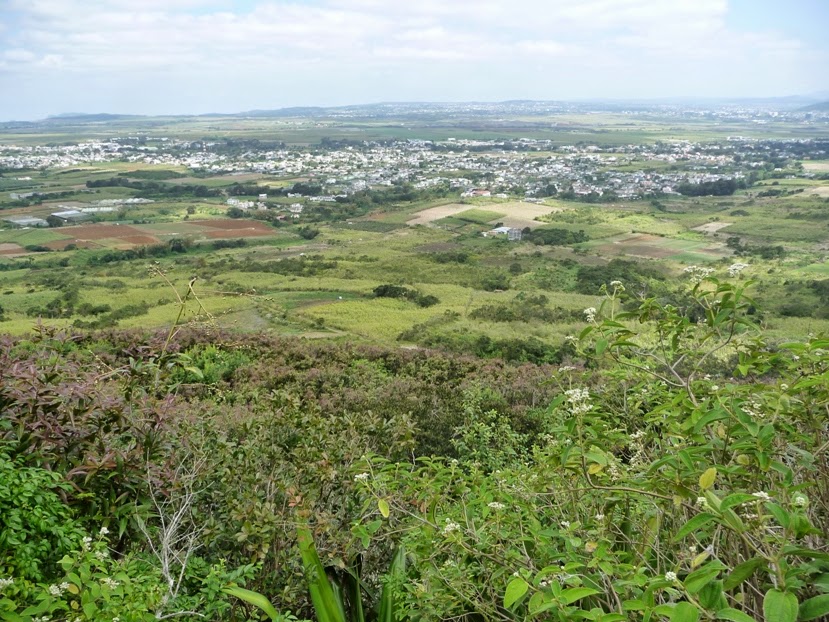Sugarcane covers 85% of arable land in Mauritius and produces around 600,000 tonnes of sugar every year, most of which is shipped straight off to the EU. The 1.2 million inhabitants of Mauritius do pretty well though, getting through 40,000 tonnes by themselves each year.
 |
| Sugarcane fields in front of Albion bay |
For a foreigner, used to fields of cows, sheep, and corn, sugarcane is a novelty. The landscape has changed a lot since I arrived in March, from the green fields of the young cane, to the tall, flowering plants, and now, back to bare soil as cutting season has started.
 |
| Flowering sugarcane |
 | |||
| Cane ready for cutting |
What nobody told me though, is that cane cutting season is a pain for the people who live here for two main reasons. Firstly, before the sugarcane is harvested, all the leafy parts are destroyed by controlled burning. This makes cutting easier, as well as chasing out any snakes and other animals which might be lurking, and improves the quality of the sugar. It also produces a lot of ash which is carried by the wind and comes down like drifts of black snow in your garden, on your car, on your clean washing, and through every door or window you might have had the misfortune to leave open.
It doesn't look very nice either.
The other annoyance is being stuck behind a lorry transporting the harvested cane to the mills. The roads in Mauritius, on the whole, are not great. They're narrow, there's no drainage, no parking, and far too many people who won their driving licence in a lucky dip (not really, but they certainly shouldn't have got it on merit and good driving!) During transportation, cane is not secured and pieces often go flying off the back of the lorry, lying abandoned in the middle of the road. Lorries are restricted to 40kmph, which is a good thing, unless you're trying to overtake one and there's no space, in which case it can double your journey time, and lead to a line of irate horn-honkers behind you.
It's not all bad though. When I go to the shops to stock up on baking products, I choose from this range:
rather than this one, which is what was on offer in my local shop in France.










































